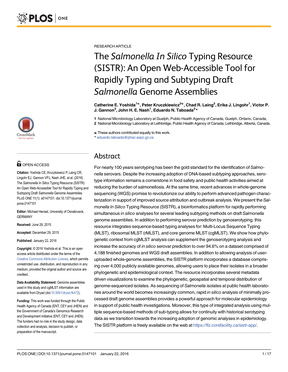When it comes to the English language, there are many variations spoken around the world, each with its own unique characteristics.
Two of the most well-known varieties are American and British English, which have developed distinct accents, vocabularies, and grammatical structures over time.
Introduction to British Accents
Definition of British Accent
A British accent refers to the unique way of pronouncing English words and sentences in the British Isles. There are many different British accents, each with its own distinct characteristics. These accents are a result of the history and evolution of the English language in Britain.
History of British Accents
The history of British accents dates back to the Germanic tribes that settled in Britain, bringing their native languages that evolved into different dialects of Old English. Over time, these dialects gave rise to various accents of British English, including Northern, Midlands, Southeastern, and West Country accents.
Types of British Accents

Received Pronunciation (RP)
Received Pronunciation (RP) is the standard English accent, also known as the Queen’s English or BBC English. It is considered the most prestigious accent of British English and is widely used in formal situations, such as in the media and in education.
RP is not tied to any specific region but rather to social class and education. It evolved in the public schools and universities of 19th-century Britain and became associated with the upper classes and the educated elite. While only about 2% of the British population speaks with an RP accent, it remains influential and is often taught to non-native speakers learning British English.
Regional Accents of the UK
England
There are many regional accents in England, some of the most recognizable include:
1. Cockney: Originating in the East End of London, Cockney is known for its distinctive features such as glottal stops (replacing ‘t’ sounds with a stop in the throat) and the use of an ‘f’ sound instead of ‘th’. It’s also famous for its rhyming slang. 2. Scouse: The accent of Liverpool, made world-famous by the Beatles. It’s characterized by a nasal quality and unique intonation patterns. 3. Geordie: Hailing from the Newcastle area, Geordie is known for its sing-song intonation and distinctive vocabulary. 4. Brumie: The accent of Birmingham, often characterized by a downward intonation at the end of sentences.
Each of these accents, along with many others, reflects the unique history and cultural identity of its region.
Scotland, Wales, and Ireland
The other nations of the UK contribute their own unique accents to the British linguistic landscape:
1. Scotland: Scottish accents are heavily influenced by the Gaelic language and Norse languages from Viking invaders. The Scottish accent is known for its rolled ‘r’ sounds and distinctive vowel pronunciations. 2. Wales: Wales has its own language, Welsh, which significantly influences the Welsh English accent. This accent is characterized by a lilting, musical quality and certain consonant variations. 3. Ireland: Irish accents are diverse, with several main groups: 1. Ulster accents, including the distinctive Northern Irish accent 2. Dublin accents 3. Various accents of the west, midlands, and south
The Northern Irish accent, particularly in Ulster, is known for its unique phonetic features and influences from the Irish language. It often features a strong ‘r’ sound and distinctive vowel pronunciations.
Characteristics of British Accents
Phonetics and Phonology
British accents exhibit a wide range of phonetic and phonological features:
1. Vowel Sounds: British accents, particularly Received Pronunciation, are known for their distinctive open vowels. RP has four open back vowels: /æ ɑː ɒ ɔː/. This contrasts with many other accents worldwide. 2. Consonant Pronunciation: Different accents handle consonants in unique ways. For example, the Cockney accent is known for its glottal stops, while some Northern accents may drop the ‘h’ sound at the beginning of words. 3. Intonation: The melody of speech varies significantly across British accents. Some, like Scouse, have a distinctive rise and fall pattern, while others, like RP, have a more measured intonation.
Vocabulary and Grammar
Accents aren’t just about pronunciation; they often come with their own vocabulary and grammatical quirks:
1. Regional Vocabulary: Different regions may use entirely different words for the same thing. For example, a bread roll might be called a “bap” in Scotland, a “cob” in the Midlands, or a “barm” in Manchester. 2. Grammatical Structures: Some accents have unique grammatical features. For instance, in parts of Northern England, “were” might be used in place of “was” for all persons (e.g., “I were going to the shop”). 3. Idioms and Expressions: Each accent comes with its own set of idioms and expressions. The Cockney accent, for example, is famous for its rhyming slang, where a word is replaced with a phrase that rhymes with it (e.g., “apples and pears” for “stairs”).
British English vs American English

Language Differences
While British and American English are mutually intelligible, they have developed some notable differences:
1. Spelling: American English often simplifies spellings. For example, “colour” becomes “color,” and “centre” becomes “center.” This is largely due to the influence of Noah Webster, who sought to make American English more distinct. 2. Vocabulary: Many everyday items have different names in British and American English. For instance, what the British call a “lift” is an “elevator” in American English. 3. Grammar: There are subtle grammatical differences too. For example, British English tends to use the present perfect tense more frequently where American English might use the simple past.
Accent Differences
The differences in accent between British and American English are numerous:
1. Rhotic vs Non-Rhotic: Most British accents are non-rhotic, meaning the ‘r’ sound is only pronounced before vowels. Most American accents are rhotic, pronouncing the ‘r’ in all positions. 2. Vowel Sounds: Many vowel sounds differ between the two varieties. For example, the ‘a’ in “bath” is pronounced like the ‘a’ in “father” in southern British accents, but like the ‘a’ in “cat” in most American accents. 3. Stress and Intonation: British English often places stress on different syllables compared to American English (e.g., “con-TRO-versy” vs “CON-tro-versy”).
Regional Variations in British English
Northern England
Northern English accents are diverse and distinctive:
1. Geordie: Characterized by a sing-song intonation and the use of words like “pet” as terms of endearment. 2. Scouse: Known for its nasal quality and unique vocabulary, including words like “boss” meaning excellent. 3. Yorkshire: Features include the use of “thee” and “thou” in some areas, and a distinctive pronunciation of the ‘u’ sound.
Southern England
Southern accents are equally varied:
1. Received Pronunciation: While not strictly regional, RP is associated with the south, particularly London and the Home Counties. 2. West Country: Characterized by a rhotic pronunciation and a tendency to emphasize ‘r’ sounds, as well as unique vocabulary. 3. Estuary English: A modern accent that combines features of RP and Cockney, widely spoken in Southeast England.
Social and Cultural Significance of British Accents
Social Identity and Accent
In Britain, accents play a significant role in shaping social identity:
1. Regional Identity: Accents are often a source of regional pride, reflecting local history and culture. 2. Class Associations: Historically, certain accents (like RP) have been associated with higher social classes, although this is changing in modern Britain. 3. Professional Impact: Studies have shown that accents can influence perceptions in professional settings, affecting job prospects and social mobility.
Cultural Representation and Stereotypes
British accents feature prominently in media and popular culture:
1. Media Representation: Different accents are often used in films and TV to quickly establish a character’s background or personality. 2. Changing Perceptions: While stereotypes persist, there’s a growing appreciation for accent diversity in British media and society. 3. Global Influence: British accents, particularly RP, continue to be popular in English language teaching worldwide, despite representing only a small percentage of native speakers.
Final Thoughts
The rich tapestry of British accents reflects the diverse history and culture of the British Isles. From the Queen’s English to the varied regional accents, each variation tells a story of local identity, social change, and linguistic evolution. Understanding these accents not only enhances our appreciation of the English language but also provides insight into the complex social and cultural landscape of Britain.
As language continues to evolve, so too will these accents, adapting to new influences and social changes. In celebrating this diversity, we recognize the importance of accents as carriers of history, culture, and individual identity in an increasingly globalized world.









